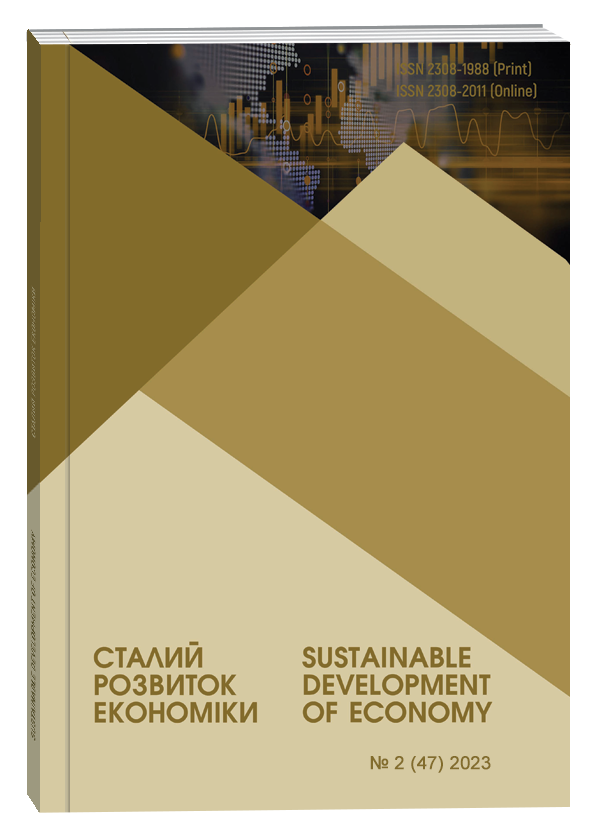ANALYSIS OF THE USE OF MACHINE LEARNING METHODS IN THE ANALYSIS OF INDICATORS OF INTERNET RESOURCES
Abstract
In modern conditions, due to the digitization of socio-economic phenomena, more and more businesses are moving their activity to the Internet. Modern web technologies allow collecting large amounts of statistical data for analyzing the effectiveness of economic activities of internet resources. To make more effective management decisions, it is appropriate to use machine learning methods alongside classical statistical methods. This article describes basic machine learning methods and various examples of their application to solve problems in web resource analytics. The issues related to the insufficient effectiveness of classical statistical methods for making optimal management decisions are analyzed. Different directions of the digital economy where machine learning methods can be applied as an alternative to classical statistical methods are investigated. Examples of implementing machine learning methods to enhance the efficiency of various tasks in the digital business environment of enterprises are provided. In the scientific article described cases of applying such king of task as: 1) application of supervised machine learning methods for revenue forecasting in e-commerce projects; 2) utilization of unsupervised machine learning methods for user segmentation; 3) implementation of machine learning methods for developing recommendation systems; 4) deployment of artificial intelligence algorithms for prediction and anomaly detection tasks; 5) integration of genetic algorithms for optimizing online advertising campaigns; 6) application of Uplift modeling method to optimize marketing communication expenses; 7) implementation of the multi-armed bandit algorithm for optimizing A/B testing; 8) designing chatbots using various types of neural networks for natural language processing, such as multi-layer perceptron, convolutional neural network, recursive neural network, recurrent neural network, and Long Short-Term Memory. The expediency of applying artificial intelligence methods to solve a wide range of internet resource analysis tasks is demonstrated.
References
Gomez-Cravioto, D.A., Diaz-Ramos, R.E., Hernandez-Gress, N. et al. (2022). Supervised machine learning predictive analytics for alumni income. J Big Data, 9, 11. DOI: https://doi.org/10.1186/s40537-022-00559-6
Y. Li, X. Feng and S. Zhang (2016) Detecting fake reviews utilizing semantic and emotion model, in 2016 3rd Int. Conf. on Information Science and Control Engineering, Beijing, China, pp. 317–320.
R. Ait Daoud, A. Amine, B. Bouikhalene and R. Lbibb (2015) Combining RFM model and clustering techniques for customer value analysis of a company selling online, 2015 IEEE/ACS 12th International Conference of Computer Systems and Applications (AICCSA), Marrakech, Morocco, pp. 1-6. DOI: https://doi.org/10.1109/AICCSA.2015.7507238
Jai Prakash Verma, Atul Patel (2017) Evaluation of Unsupervised Learning based Extractive Text Summarization Technique for Large Scale Review and Feedback Data. Indian Journal of Science and Technology, vol. 10(17). DOI: https://doi.org/10.17485/ijst/2017/v10i17/106493
Semi-Supervised Machine Learning Algorithms [Semi-Supervised Machine Learning Algorithms]. Available at: https://hackernoon.com/semi-supervised-machine#learning-algorithms-fnm32cw (accessed 04.12.2022).
S. Roy, M. Sharma and S. K. Singh (2019) Movie Recommendation System Using Semi-Supervised Learning Global Conference for Advancement in Technology (GCAT), Bangalore, India, pp. 1-5. DOI: https://doi.org/10.1109/GCAT47503.2019.8978353
Riku Poutanen, (2020) Analysis of online advertisement performance using Markov chains Master’s thesis Tampere University Industrial Engineering and Management.
GA4 Anomaly detection [GA4 Anomaly detection]. Available at: https://support.google.com/analytics/answer/9517187?hl=en (accessed: 04.07.2023)
Luis Miralles-Pechuán, Hiram Ponce, Lourdes Martínez-Villaseñor,(2018) A novel methodology for optimizing display advertising campaigns using genetic algorithms, Electronic Commerce Research and Applications, Volume 27, 2018, Pages 39-51, ISSN 1567-4223. DOI: https://doi.org/10.1016/j.elerap.2017.11.004
Baier, D., Stöcker, B. (2022) Profit uplift modeling for direct marketing campaigns: approaches and applications for online shops. J Bus Econ 92, 645–673. DOI: https://doi.org/10.1007/s11573-021-01068-3
Xiang, Ding, et al. (2022) Multi Armed Bandit vs. A/B Tests in E-commerce-Confidence Interval and Hypothesis Test Power Perspectives. Proceedings of the 28th ACM SIGKDD Conference on Knowledge Discovery and Data Mining.
Scott, Steven L. (2015) Multi‐armed bandit experiments in the online service economy. Applied Stochastic Models in Business and Industry 31.1: 37–45.
Lu, Tyler, Dávid Pál, and Martin Pál. (2009) Showing relevant ads via context multi-armed bandits. Proceedings of AISTATS.
Schwartz, Eric M., Eric T. Bradlow, and Peter S. Fader. (2017) Customer acquisition via display advertising using multi-armed bandit experiments. Marketing Science 36.4: 500–522.
Multi-Armed Bandit (MAB) – A/B Testing Sans Regret [Multi-Armed Bandit (MAB) – A/B Testing Sans Regret]. Available at: https://vwo.com/blog/multi-armed-bandit-algorithm/ (accessed 10.10.2023)
Z. Li, F. Liu, W. Yang, S. Peng and J. Zhou (2022) A Survey of Convolutional Neural Networks: Analysis, Applications, and Prospects, in IEEE Transactions on Neural Networks and Learning Systems, vol. 33, no. 12, pp. 99–119. DOI: https://doi.org/10.1109/TNNLS.2021.3084827


